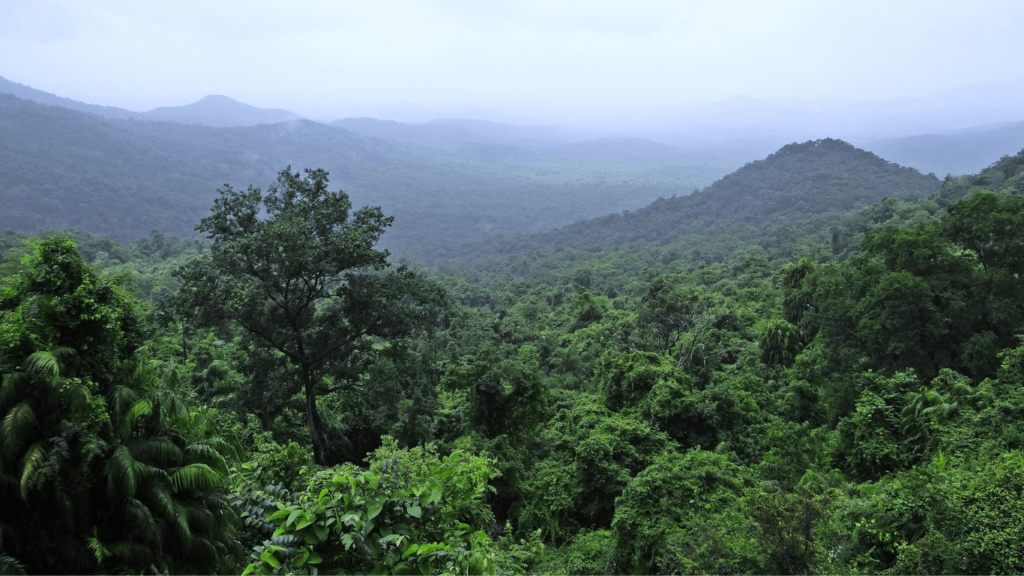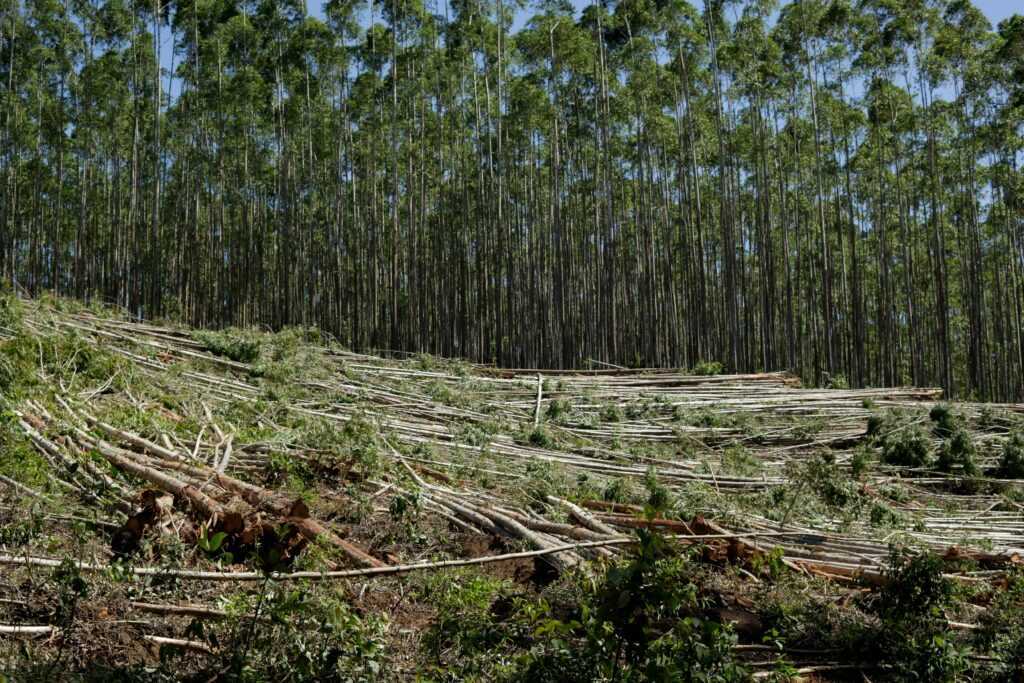Overview Of Global Forest Conservation
Global forest conservation has gained momentum, thanks to heightened awareness and international collaboration. Forests house 80% of the world’s terrestrial biodiversity, making their protection crucial. This section delves into the current strategies and initiatives that underscore the global efforts to safeguard our green ecosystems.
Major International Agreements
Multiple international agreements play a vital role in forest conservation. The Paris Agreement, adopted in 2015, focuses on reducing carbon emissions and includes commitments to halt deforestation. The United Nations’ REDD+ program supports developing nations in their conservation efforts, providing financial aid to reduce emissions from deforestation and forest degradation.
Technological Innovations
Technological advancements have revolutionized forest monitoring and protection. Satellite technology allows for real-time tracking of deforestation activities, while drones assist in planting trees in hard-to-reach areas. Blockchain technology ensures transparency in the supply chain, preventing illegal logging practices by tracking timber from forest to final product.
Community-Driven Projects
Community-driven initiatives are central to effective forest conservation. Indigenous communities often possess invaluable knowledge of local ecosystems, leading efforts in sustainable management and conservation. In Brazil, the Amazon Conservation Team collaborates with indigenous tribes to monitor and protect vast forest areas, integrating traditional knowledge with modern technology.
Financial Mechanisms
Financial mechanisms incentivize conservation by making it economically viable. Carbon credits trade provides funding for projects that reduce carbon emissions through forest conservation. Companies invest in these credits to offset their carbon footprints, channeling money directly into conservation initiatives. Public-private partnerships also fund large-scale reforestation projects, aiding in ecosystem restoration.
Legal Frameworks
Strong legal frameworks ensure long-term conservation success. Countries like Costa Rica have enacted laws that protect forests and promote reforestation. Enforcement of these laws is critical and often involves community participation and international oversight to maintain integrity and effectiveness.
Educational Campaigns
Educational campaigns raise awareness and promote sustainable practices. Programs targeting schools and communities educate about the significance of forest conservation. Involving younger generations instills the importance of environmental stewardship early on, ensuring future support for conservation efforts.
By focusing on international agreements, leveraging technology, empowering communities, implementing financial mechanisms, establishing strong legal frameworks, and prioritizing education, global forest conservation efforts have made significant strides. These measures collectively support the goal of preserving our forests for future generations.
Recent Policy Developments
Recent policy developments in forest conservation reflect a growing global commitment. These policies involve international agreements and national initiatives that aim to protect and restore forests.
International Agreements
Several recent international agreements bolster global forest conservation efforts. The European Green Deal, for example, aims to make the EU carbon-neutral by 2050 and includes measures to prevent deforestation tied to imported goods. Another significant development is the Glasgow Leaders’ Declaration on Forests and Land Use, signed by over 140 countries in 2021, pledging to halt and reverse deforestation by 2030. These agreements create binding commitments that hold countries accountable for their forest conservation efforts.
National Initiatives
Nations have introduced robust policies to address deforestation. Brazil, which holds the largest share of the Amazon rainforest, implemented the Amazon Fund to support sustainable management and reduce greenhouse gas emissions. India launched the Green India Mission under its National Action Plan on Climate Change to increase forest cover and improve ecosystem services. These national initiatives are tailored to address specific local challenges, reflecting an understanding of regional ecological and socio-economic contexts. By implementing such policies, countries reinforce their commitment to sustaining forest ecosystems.
Innovative Conservation Techniques

Advancements in technology and sustainable practices have revolutionized forest conservation.
Technology in Forest Monitoring
New technological tools are essential in forest conservation efforts. Satellite monitoring offers real-time tracking of deforestation and reforestation. For instance, satellites like NASA’s Landsat provide high-resolution images, enabling precise detection of forest changes. Drones enhance ground-level data collection, especially in remote areas where human access is limited. Advanced sensors on these drones can assess forest health by measuring tree height, canopy density, and signs of disease.
Geographic Information Systems (GIS) integrate various data sources, offering comprehensive forest management insights. Governments and NGOs use these systems to create detailed maps identifying high-risk deforestation zones. Machine learning algorithms help predict future deforestation patterns, enabling preemptive action.
Sustainable Forestry Practices
Sustainable forestry practices ensure long-term forest health and productivity. Selective logging minimizes environmental impact by only removing specific trees, maintaining overall forest structure. For example, Reduced Impact Logging (RIL) techniques limit soil disturbances and tree damage, promoting quicker forest regeneration.
Agroforestry combines agriculture and forestry, boosting biodiversity and soil fertility. Farmers grow crops alongside trees, which can improve yields and provide additional income sources. An example is the Taungya system, used in Southeast Asia, where trees and crops are planted together for mutual benefit.
Certification systems like FSC (Forest Stewardship Council) and PEFC (Programme for the Endorsement of Forest Certification) ensure that timber products come from sustainably managed forests. Certified forests adhere to strict environmental and social standards. These certifications boost consumer confidence in sustainably sourced products, fostering market demand for responsible forestry.
By leveraging technology and sustainable practices, global forest conservation efforts can achieve more significant successes.
Key Organizations And Their Impact
Several key organizations drive global forest conservation efforts. Their combined influence aids in reducing deforestation and promoting sustainable forest management.
Government Agencies
Government agencies play a critical role in forest conservation. The US Forest Service, a pioneer in sustainable forest management, oversees approximately 193 million acres of national forests. Brazil’s Instituto Brasileiro do Meio Ambiente (IBAMA) enforces environmental laws and combats illegal logging in the Amazon. The European Environment Agency (EEA) supports member states in implementing forest-related policies, contributing to the EU’s goal of carbon neutrality by 2050. These agencies utilize legislation, research, and on-ground management strategies to safeguard forest ecosystems.
Non-Governmental Organizations
Non-governmental organizations (NGOs) are crucial in advancing forest conservation globally. The World Wildlife Fund (WWF) collaborates with communities and governments to adopt sustainable land-use practices. Conservation International (CI) focuses on protecting critical forest areas that harbor biodiversity. The Rainforest Alliance promotes sustainable agriculture and forestry through certification programs, influencing market demand for responsibly sourced products. These NGOs amplify conservation efforts through advocacy, research, and community engagement, ensuring long-term ecological integrity.
By collaborating with these organizations, the global community can significantly advance forest conservation.
Challenges And Roadblocks
Despite significant strides, several challenges hinder global forest conservation efforts.
Deforestation Drivers
Economic factors drive deforestation. Agriculture expansion, logging, and infrastructure development cause significant forest loss. The growing global demand for palm oil, soy, and cattle ranching exerts pressure on forests, pushing deforestation rates higher. Illegal logging remains a persistent problem, with criminal networks profiting from unregulated timber sales. Urbanization and population growth also contribute, as land is cleared to accommodate housing and commercial facilities. These drivers are interconnected, making it difficult to address one without tackling the others simultaneously.
Enforcement Issues
Weak enforcement undermines conservation efforts. Corruption within governmental bodies often leads to illegal resource extraction going unchecked. Insufficient funding for environmental agencies results in inadequate monitoring and enforcement capabilities. In many countries, laws protecting forests exist but aren’t enforced effectively due to lack of resources or political will. Additionally, the complexity of international supply chains makes it challenging to trace and halt illegal logging activities. Dealing with these enforcement issues requires robust, transparent governance and increased investment in monitoring and regulatory mechanisms.
Success Stories And Case Studies
Forest conservation efforts across the globe have shown remarkable results. Here are a few instances of successful initiatives that highlight the potential for positive change.
Successful Reforestation Projects
- China’s Loess Plateau: Once severely degraded, the Loess Plateau now showcases a significant environmental turnaround. By implementing terracing, tree planting, and sustainable farming techniques, China has restored vegetation and improved local livelihoods.
- Greening Ethiopia: The government’s Green Legacy initiative, launched in 2019, surpassed its goal by planting over 4 billion trees. This massive reforestation effort aims to combat climate change, soil erosion, and deforestation while promoting environmental awareness.
- Costa Rica’s Forest Recovery: Costa Rica offers a model of reversing deforestation. Thanks to policies promoting ecotourism and Payment for Ecosystem Services (PES), forest cover increased from 21% in the 1980s to over 53% by 2021.
Community-Led Conservation Efforts
- Indigenous Amazon Guardians: Indigenous groups play a vital role in preserving the Amazon. The Kayapo people in Brazil employ patrol systems and technological monitoring to protect their land from illegal logging and mining.
- Kenya’s Green Belt Movement: Founded by Wangari Maathai, this grassroots organization has empowered women to plant and nurture over 51 million trees. It addresses environmental degradation and socio-economic issues by integrating conservation with community development.
- Nepal’s Community Forestry Program: Villagers take control of forest management through local user groups. This approach has led to increased forest cover, enhanced biodiversity, and better community well-being, with over 1.8 million households involved.




